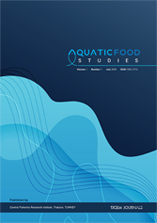Horticultural Studies (HortiS)
2007, Vol 24, Num, 1 (Pages: 32-39)
THE EFFECT OF CADMIUM ON ENVİRONMENT AND HUMAN HEALTH
2 Akdeniz Üniversitesi Ziraat Fakültesi Toprak Bölümü/ ANTALYA Viewed : 2887 - Downloaded : 4710 Cadmium is one of the most toxic heavy metals for living organisms. In world, soils are prone to elevating Cd concentrations due to continous use of phosphorus fertilizers and sewage sludge. Cadmium is very risky for plant, animal and human health due to very high mobility in soil and plant system. The presence of Cd in plants results in many physiological alterations affecting protein synthesis, nitrogen and carbohydrate metabolism, enzyme (i.e. nitrate reductase) activity, photosynthesis and chlorophyll synthesis. Accumulation of cadmium in plant tissues significantly reduces crop quality and yield. Accordingly, excessive fertilizers usage in greenhouses inevitanly results in elevated Cd concentration which may be toxic to human. The most serious consequences of chronic cadmium toxicity are: cancer (lung and prostate), kidney damage, pulmonary emphysema, bone disease (osteomalcia and osteoporosis) and anemia. The aim of this review was to evaluate the effects of cadmium on soil, plant and human health. Keywords : Cadmium, environmental pollution, plant health, human health














